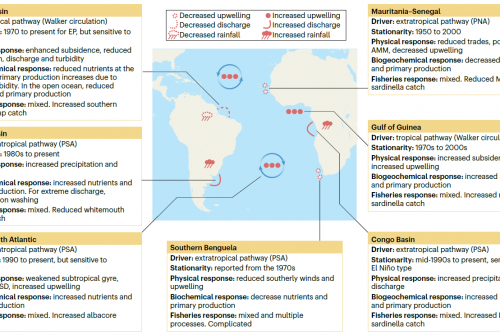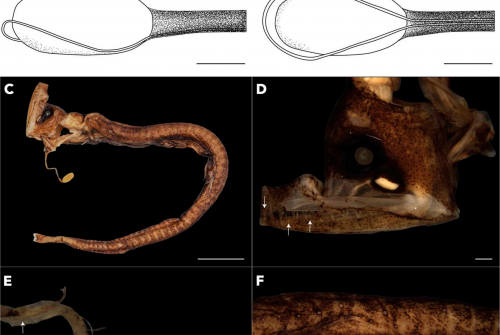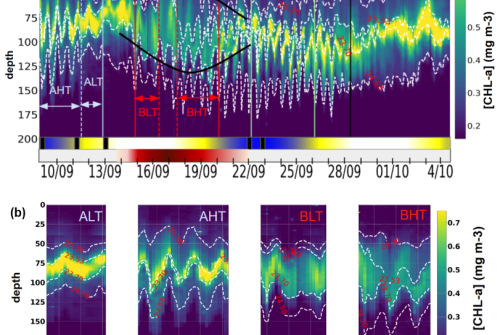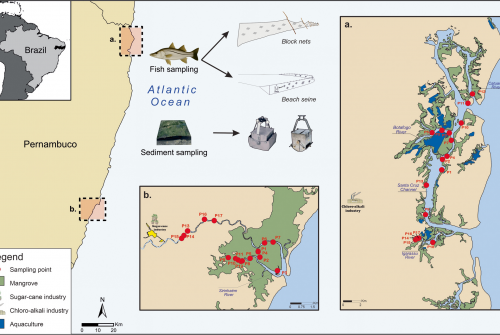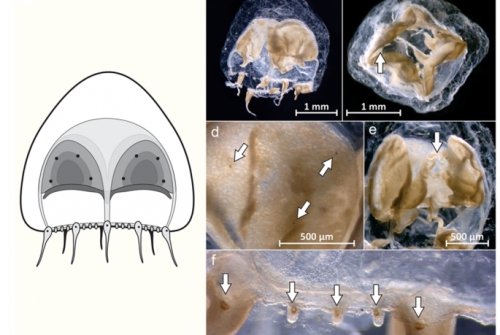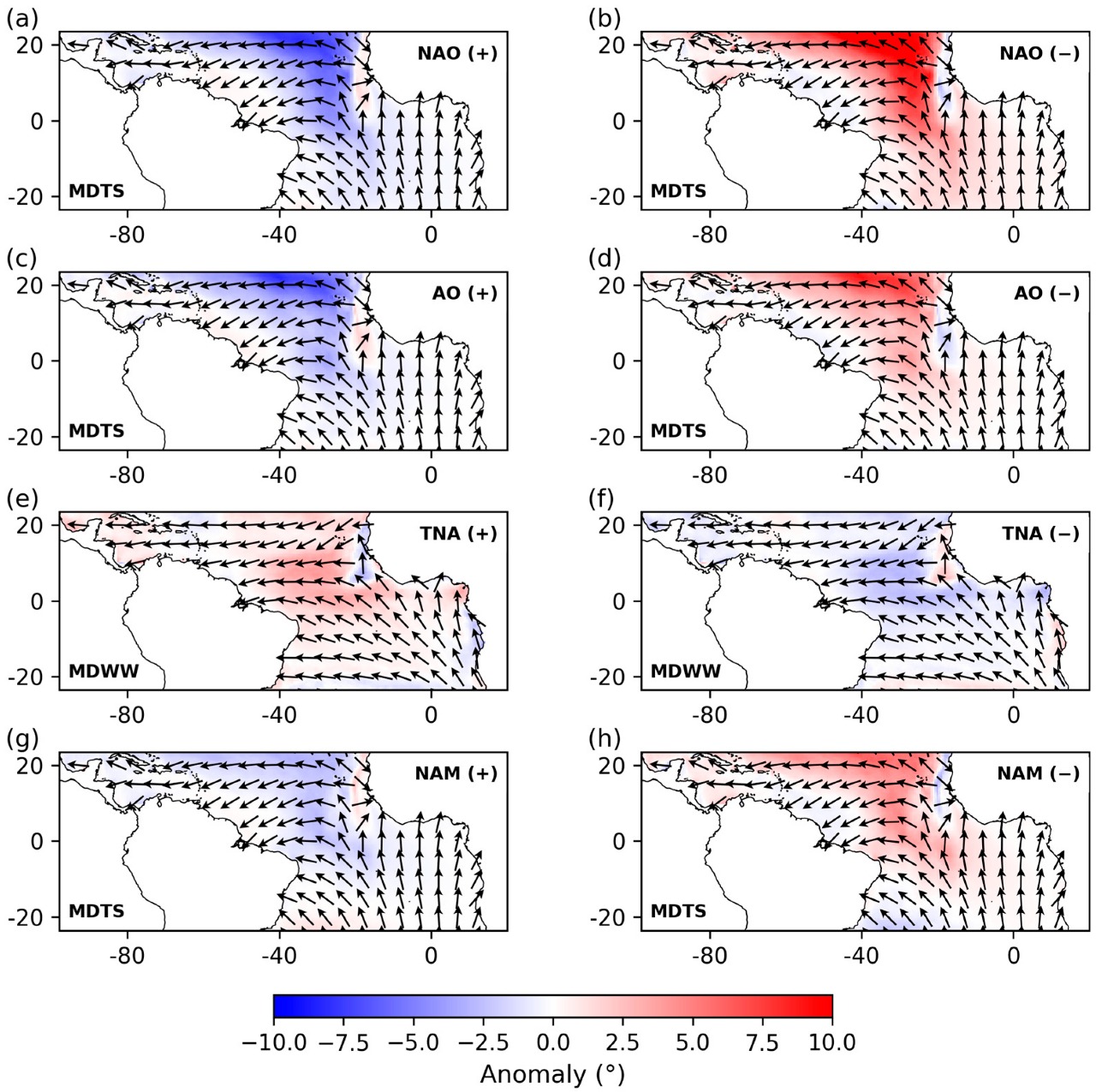
Wave climate variability, including seasonal cycles, long-term trends, and interannual anomalies of wave parameters, was investigated across five latitudinal sectors using ERA5 reanalysis data from 1980 to 2023. Pronounced seasonal cycles were observed in both Northern and Southern Hemisphere sectors, although the variability was more marked in the Northern Hemisphere. In contrast, the tropical region exhibited comparatively stable conditions throughout the year. Long-term trends revealed increases in both significant wave height and peak period across most sectors. The tropical region exhibited a trimodal regime driven by wind waves at low latitudes and remotely generated swells from both hemispheres. Teleconnections associated with the North Atlantic Oscillation (NAO) explained interannual variability in wind-wave direction in the tropics with an r2 of 0.74 and wind-wave height variability in the Northern Hemisphere with an r2 of 0.81. Additional indices, such as the Arctic Oscillation (AO), the Tropical North Atlantic (TNA) index, and the Northern Annular Mode (NAM), explained 30 to 60 percent of the directional variability. These results underscore the need to account for climate-driven variability in wave modeling frameworks to improve forecast accuracy and representation of directional trends.
DOI: doi.org/10.3390
Reference
Prestes, Y. O., da Silva, A. C., Marquez, A. L., Gomes, G. D., & Hernandez, F. 2025. Climate Variability and Atlantic Surface Gravity Wave Variability Based on Reanalysis Data. Journal of Marine Science and Engineering, 13(8), 1536.



